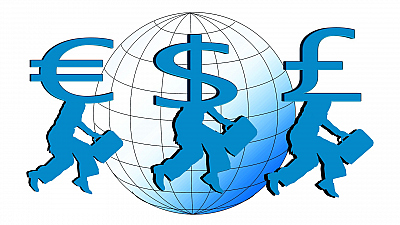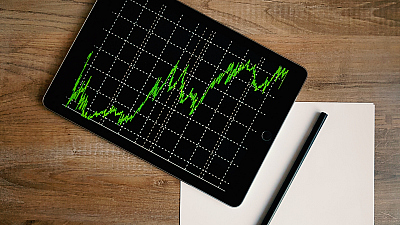The Gross Domestic Product (GDP) is a summary of the overall economic activity of a country.
GDP represents the total value of all goods and services produced in an economy for a given period.
It is published annually, but there are also monthly and quarterly publications. It can be calculated using different methods, but the most widely used is the Expenditure approach, which calculates the sum of final goods and services.
GDP = Consumption (C) + Investments (I) + Government Spending (G) + [Exports (X) – Imports (M)]
From the fundamental analysis perspective, the rate of change of GDP can give fair information about the “health” of the economy.
Forex participants pay close attention not so much to the figures themselves, but rather to the change in respect to the previous period.
An increase in the GDP compared to previous periods points to an increase in the supply of goods and services, the employment rate and the money supply in the system. The economy is considered growing and its currency – stable and attractive to forex players.
Of course, too much of a good thing is never good news. There is a “goldilocks” zone for the increase of the GDP, different for every economy. In common, a rise between 1.5% to 3% per year is considered healthy for developed economies, such as the US or the UK, while for developing countries, like China, the normal rate can be more than 6% per year.
Values beyond that comfort zone are a source of concern about growing inflation or unsustainable economic bubbles. Slower growth, on the other hand, would lead to concerns about stagnation and declining economic standards.
Negative values would indicate that the economy is shrinking. This would mean business cutbacks, rise in unemployment rate, less money in the economy. Two consecutive quarters with negative GDP growth is typically viewed as a recession.
GDP is the one indicator to give an overall estimate of a country’s economy.
This is helpful, as it provides a net value of a whole lot of different components. But being so general means that some important characteristics may be obscured. To compensate for that and to add to the value of GDP there are additional indicators derived from it.
One of the most important are the GDP per capita. When comparing the GDP of two countries it is easy to say which economy did better, but it does not necessarily mean higher living standard for its people. If we divide GDP by the number of the citizens, we get the GDP per capita, or how much of the total economy income can be attributed to each individual citizen.
Another common adjustment is to extract inflation from GDP. This is called Real GDP. It is a measure that reflects the true value of all goods and services produced by an economy in a given year, expressed via base-year prices. The comparison of the Real GDP of consecutive years can give information for both the quantity and value of goods and services.
GDP is an indicator that is calculated retrospectively.
The figures come out only after the period is over.
In contrast, the forex market is forward-looking, so it is often affected by the expectation of a future change.
Expectations are usually priced in the value of the currencies before the actual figures are calculated. Still, sometimes expectations defer from reality and that can lead to volatile movements in the markets.
As a rule of thumb, lower than expected GDP would lead to a sell off of the domestic currency, as it is expected to weaken against the other currencies. Higher than projected GDP would strengthen the underlying currency compared to other currencies.
GDP reports do not always have the same effect on the markets.
Sometimes expectations are fully reflected in the prices so the markets might not react at all.




